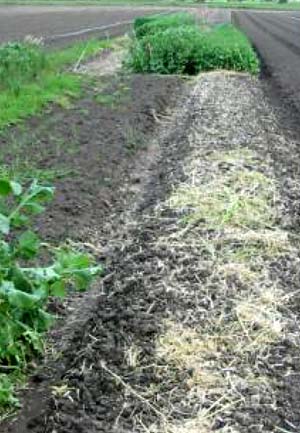|
|
Sclerotinia diseases are among the most difficult soilborne pathogens to control. Chemical control methods for these pathogens usually offer only temporary crop protection against infection, and have little or no effect on the long term viability of sclerotia. Biological control by antagonistic and parasitic microbes to plant pathogens has been associated with Sclerotinia control in some soils and is often related to increase in organic matter. Organic matter is vital as a food source and haven to beneficial microorganisms that are related to disease suppression, soil structure, improvement in soil properties and crop health. The use of green manures in between successive crops helps maintain or increase organic matter in soils. However, little is known of the effects of different types of green manures on Sclerotinia wilt on lettuces. Brassica plants are known to produce different types and levels of biofumigant chemicals, collectively known as isothiocyanates This study has shown that high plant biomass and deep tap root system, which reduced soil crusting, improved infiltration, increased organic matter and reduced subsoil compaction. These soil improvements may contribute to disease management and crop health.
Discussion:
Acknowledgements : The authors thank Mark Shakelton at CSIRO Entomology, Perth, conducted plant analysis for isothiocyanates. The authors acknowledge the financial support of Horticulture Australia Limited (HAL) The Australian Government provides matched funding for all HALs R&D activities. |
||||||
|

